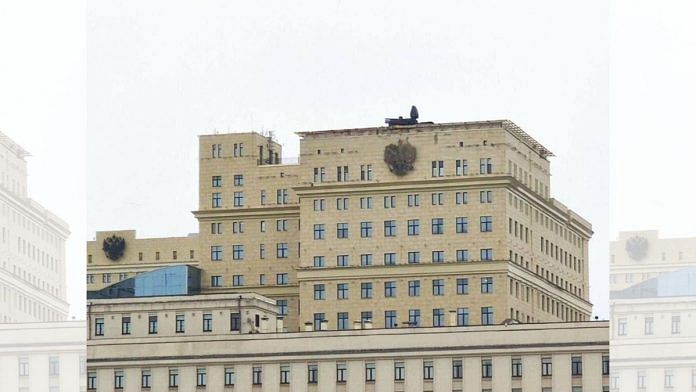New Delhi: With the protracted war in Ukraine showing no signs of ending, Russia has reportedly moved to fortify the capital city of Moscow. Recently, a Pantsir-S air defence system was placed on the roof of Russia’s Ministry of Defence at Frunzenskaya Embankment.
This has led to speculation that Russia could be fearing an imminent Ukrainian air attack on its capital as the war nears the one-year mark.
Oryx, an open-source intelligence analyst, even referenced parallels to 1941 and Operation Barbarossa — when the Nazis invaded Russia. This included the Battle of Moscow.
The Washington Post reported that Moscow also placed the Pantsir-S on top of a district education ministry building in Moscow’s Teterinsky Lane.
The Kremlin has declined to comment on these developments till now. It remains unclear whether this is part of a plan to bolster air defences through the capital city or just to protect a few buildings and areas.
Also read: ‘Double agent drone’ — this is how Ukraine is using a Soviet-era weapon to attack Russia
Essentially, the Pantsir-S is a category of missile systems that are designed to intercept and deter any incoming enemy aircraft and missiles. They are ground-based, short-to-medium-range weapons systems that can be used against aircraft, helicopters, precision munitions, and cruise missiles.
The Pantsir-S falls in the category of self-propelled missile systems. It has been codenamed Greyhound by NATO. Further, they were developed by the Soviet Union to replace the 2K22 Tunguska air defence system.
According to the Centre for Strategic and International Studies (CSIS), “Using its solid-state search radar, the Pantsir can track up to 20 tactical aircraft-sized targets at a range of 32-36 km.”
Further, CSIS explains that after detection, “the system can select targets with its high-frequency engagement radar or optional thermal imaging sensor.”
Usually, the Pantsir operates in batteries of six launcher vehicles, though they can operate individually too. Sometimes, they are also accompanied by a command-and-control vehicle.
CSIS further finds that the missile system can engage aircraft up to a maximum range of 20km and an altitude of 10km, and target subsonic cruise missiles at a range of 12km and an altitude of 6km. High-speed air-to-ground missiles it can target must be at a maximum of 7km away and an altitude of 6km.
The Pantsir-S has been produced by the KBP Instrument Design Bureau. Its parent company is High-Precision Systems, which is a holding company of the state-owned Rostec Group.
Its design was completed by 1995. However, they have been in service only since 2012. They were reportedly been used in the Syrian Civil War, Libyan Civil War, and the invasion of Crimea, apart from the current Ukraine conflict.
(Edited by Zinnia Ray Chaudhuri)
Also read: Ukraine demands speedier weapons deliveries from West to confront Russian pressure



